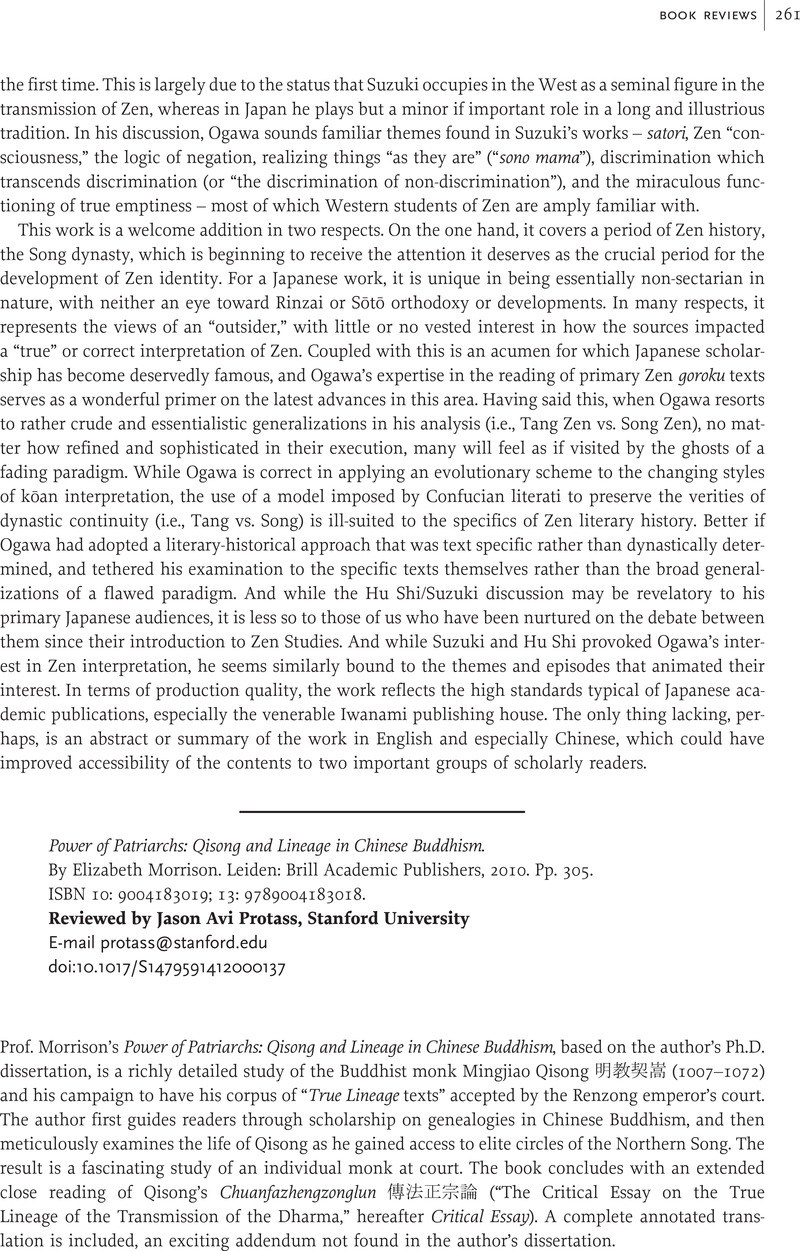No CrossRef data available.
Published online by Cambridge University Press: 09 July 2012

1 Tang Yongtong, 湯用彤, “Lun Zhongguo fojiao wu ‘shizong’ 論中國佛教無‘十宗’.” Xiandai foxue 4 (1962), pp. 15–23Google Scholar.
2 See in particular her lucid syntheses and conclusions in Chapters 1 and 2 based on Linda Penkower's work on Tiantai in the Tang, as well as T. H. Barrett on Daoism. This subtle interpretive move seems to be informed by the recent work on typological problem of “religions” in the Chinese case and “the constant self-construction” of tradition elsewhere (pp. 3–4). Cf. Campany, Robert Ford, “On the Very Idea of Religions (in the Modern West and in Early Medieval China),” History of Religions 42:4 (2003), pp. 287–319CrossRefGoogle Scholar.
3 E.g., Adamek, Wendi, The Mystique of Transmission: On an Early Chan History and Its Contexts (New York, Columbia University Press, 2007)CrossRefGoogle Scholar; Broughton, Jeffrey, Zongmi on Chan (New York: Columbia University Press, 2009)CrossRefGoogle Scholar.
4 See, e.g., Schlütter, Morten, How Zen Became Zen: The Dispute over Enlightenment and the Formation of Chan Buddhism in Song-Dynasty China (Honolulu: University of Hawai‘i Press, 2008)CrossRefGoogle Scholar; Welter, Albert, Monks, Rulers, and Literati: The Political Ascendency of Chan Buddhism (Oxford: Oxford University Press, 2006)CrossRefGoogle Scholar; Welter, Albert, The Linji lu and the Creation of Chan Orthodoxy: The Development of Chan's Recorded Sayings Literature (Oxford and New York: Oxford University Press, 2008)CrossRefGoogle Scholar.